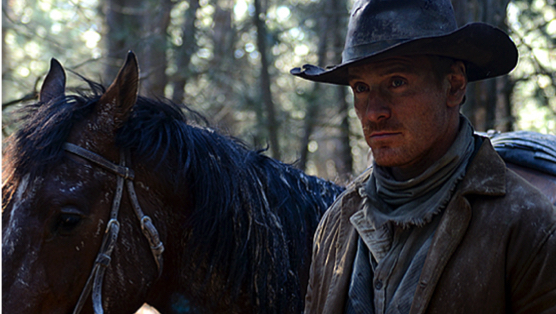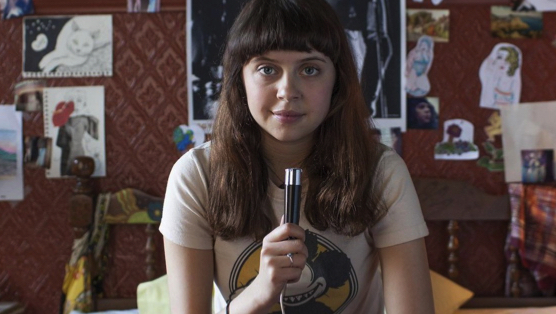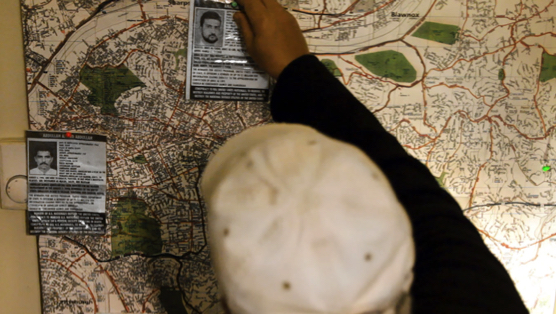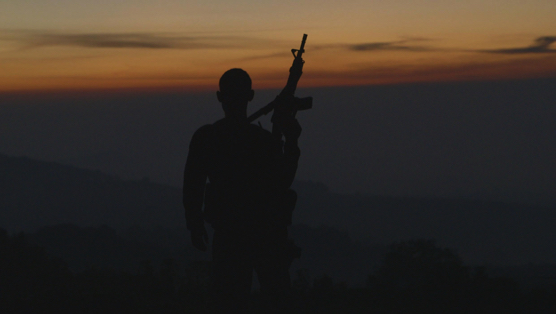The 20 Best New Filmmakers of 2015
In some ways, 2015 was a bit of a disappointing year for film (more details on that to come). But one measure by which the year overperformed is in the number of exciting new filmmakers who made their debuts this year. From Persian lesbian hipsters to young English soldiers in Northern Ireland to ultrarealistic AI creations to a community of deaf students, new filmmakers brought us some of the most fascinating characters of the year. Here are twenty filmmakers whose second features we can’t wait to see.
20. Desiree Akhavan, Appropriate Behavior
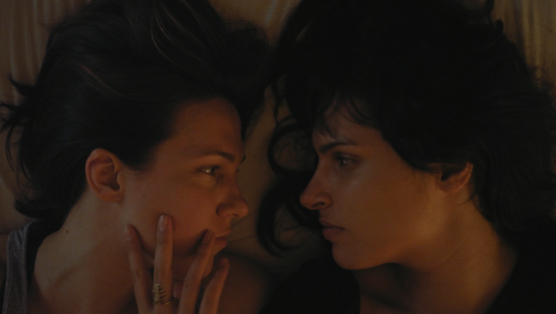
Everybody and their hip boomer parents will compare Appropriate Behavior to Girls. Everybody. That proves the blatancy of their family resemblance; you can no more ignore the influence of Dunham in Akhavan’s film than the effect that, say, the French New Wave has had on Wes Anderson. We all have our influences; Akhavan simply imprints hers on her movie’s sleeves, and immediately subsumes them with intimately personal matters unique to her background. Appropriate Behavior isn’t just a movie about unmoored twenty-somethings set against the backdrop of a disaffected Brooklyn landscape. It’s about straddling cultural lines. Amazingly, Akhavan’s film does in an hour and a half what Girls has done over thirty three episodes. For all Akhavan’s brevity, and for its lens of ground-level realism, her picture feels vibrant, lived in, and incredibly rich. That’s an assured mark of vision if ever there was one. —Andy Crump
19. Yann Demange, ’71
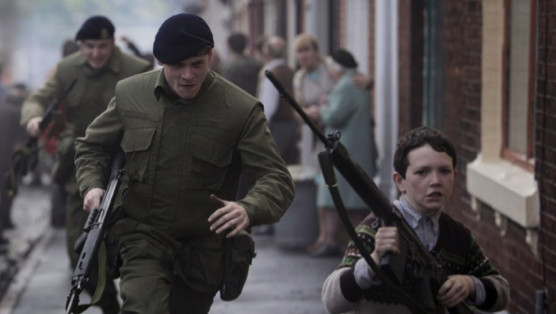
’71 is a claustrophobic experience, as gray and imposing as the film’s muted color palette. Set largely in Belfast during the midst of one of the most violent periods of the Northern Ireland Conflict, the feature directorial debut of Yann Demange doesn’t floor us with fresh insights about war or man’s inhumanity to man. No, ’71 is far too intimately focused on its besieged protagonist for anything so sweeping. Demange’s up-close approach, enhanced by Tat Radcliffe’s stark cinematography, has its downsides. ’71 can feel so vérité, so devoted to emphasizing a dispassionate tone, that it’s almost impersonal, mechanical, an exercise in crafting tension. But such a consciously harsh style reaps later rewards. ’71 views Gary’s plight pitilessly, just as it does those on both sides of the conflict. Without making a fuss, the film seems to see all military action as largely pointless, perhaps even antithetical to a group’s stated political objectives. In such a crucible, soldiers are, as one person says in ’71, merely meat, but there’s no teary-eyed revelation in the fact—like everything here, it’s presented as blunt truth. —Tim Grierson
18. Bryan Carberry& Clay Tweel, Finders Keepers

Finders Keepers can boast of having one of the better single-sentence synopses of recent memory, when it comes to documentaries: “After a man loses a leg in a plane crash and mummifies it himself, an errant storage locker sale deposits it into the hands of an entrepreneur who refuses to return the body part even after the leg’s original owner demands it back.” That’s the “meat” of Finders Keepers, if you will—a custody battle over a severed body part that really took place between leg-loser John Wood and leg-finder Shannon Whisnant in the years following 2007, when the discovery of the leg and resulting feud made national news. The resulting documentary is an absurd, rambling, he-said/he-said story that reveals two fascinating personalities residing in rural North Carolina. At times, the story seems headed toward an expected conclusion, but every time it feels like things should be wrapping up, some new hurdle arises to be overcome. —Jim Vorel
17. Michael Beach Nichols and Christopher K. Walker, Welcome to Leith
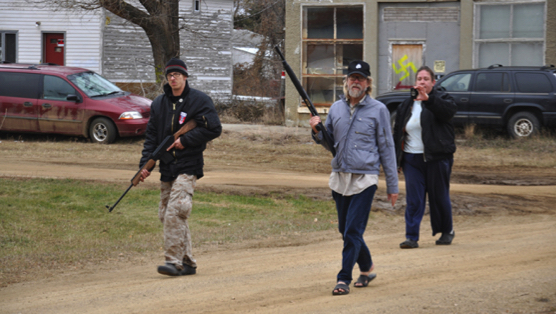
It’s a small town in an almost nondescript kind of Americana. All 24 members of the community know and look out for one another. Welcome to the small town of Leith.
A nice enough stranger takes an interest in their town. He quickly buys up tracts of land and becomes one of the biggest stakeholders in the area. But this particular stranger, Craig Cobb, is not just a dowdy loner. He’s a white supremacist instigating an Aryan coup in the American heartland. What recourse do the locals have to oust the interloper? The answer: shockingly, not much. Welcome to Leith poses the question of where tolerance and intolerance begin. How quiet do we get when the Dutton family espouses their beliefs as “white separatists” around their young children? How do we feel about individual rights when the will of that individual is essentially to terrorize a community and repurpose their homes for hatred? For its eerie sense of timeliness and excellent storytelling, Welcome to Leith is one of the must-watch documentaries of 2015. —Monica Castillo
16. Sarah-Violet Bliss and Charles Rogers, Fort Tilden

Fort Tilden’s quite charming, though filmmakers Sarah-Violet Bliss and Charles Rogers never let their charmless subjects, acerbic artist Harper (Bridey Elliott) and spineless Peace Corps recruit Allie (Clare McNulty), gain too much of their audience’s sympathy. It’s a narrow line to walk: the mid-20s Williamsburg roommates have to seem vacuous enough to get stranded in “deep Brooklyn” after passively watching one of their bikes get stolen while on an 11-mile daytrip to the beach, but not so stupid that they can’t lob the occasional well-honed insult at a fellow human being or incisively dissect each other’s insecurities. —Mark Abraham
15. Kimberly Levin, Runoff
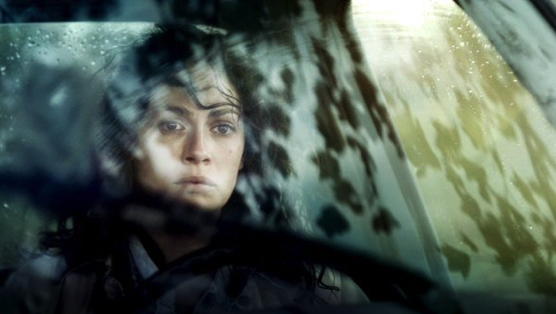
Director Kimberly Levin’s Runoff is a frequently lovely, impressionistic film. Not only is her rendering of rural Kentucky gorgeous, she’s able to recreate well-observed vignettes of clandestine human bliss: a husband and wife taking a literal roll in the hay; a son teaching a mother, who is being dorky, to use a bong; a neighbor taking pleasure in the quiet support of a close knit community affected by larger, institutional forces. These moments give weight to the plot at hand, populating what could be a bloodless analysis of the plight of small farmers with actual human beings. —M.A.
14. Joel Edgerton, The Gift

Actor Joel Edgerton’s debut feature as director, The Gift, is the best kind of great movie: It doesn’t announce itself as great at all. Edgerton, who also wrote the screenplay, knows he’s got the goods in his grasp, content to let his ideas slowly get under the audience’s skin and gestate, rather than ram them down our throats. Although a cursory glance at its plot (or a quick viewing of the film’s trailer) might indicate that The Gift is a run-of-the-mill stalker film, nothing could be further from the truth: Edgerton begins with a set of familiar conventions and then overturns each one scene by scene, letting his characters and themes evolve in a manner far more naturally than one might expect from a genre film, or from a summer horror movie—which of course makes it all the more terrifying. —Jim Hemphill
13. Amanda Wilder, Approaching the Elephant
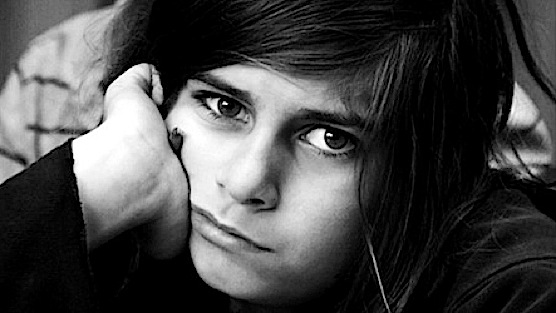
Most would agree that America’s public schools have their significant flaws, but are there any alternatives that are better? That’s the provocative question asked by Approaching the Elephant, a documentary about an untraditional school in its early stages—and what’s best about this film is that its answer is far from conclusive by the end. With patience and a clear-eyed perspective, Approaching the Elephant goes beyond weighing the value of what’s known as “free schools” to consider how children develop and what role teachers have in shaping them. —T. G.
-

-

-

-

-

-

-

-

-

-

-

-

-

-

-

-

-

-

-

-

-

-

-

-

-

-

-

-

-

-

-

-

-

-

-

-

-

-

-

-

